It’s a freezing cold January morning, thick fog, a demolition site next door but me and my Dad are on a mission. Newton Heath Health Centre here we come! It’s Covid vaccination time and nothing’s going to stop us. Truth be told, we were a wee bit anxious. It’s not his usual surgery so the building is unfamiliar. The road to it was blocked off but we faithfully followed the diversion signs and arrived with 5 minutes spare. Perfect!
Truth be told, we were a wee bit anxious. It’s not his usual surgery so the building is unfamiliar. The road to it was blocked off but we faithfully followed the diversion signs and arrived with 5 minutes spare. Perfect!
Cheerful yellow vested volunteers looked after us from the moment we arrived, guiding us to a parking space close by and showing us where to go. Once inside our hands were sanitised and we took a place on a marker.
From there, it was a bit like being on a conveyor belt; moving smoothly from one area to the next. A recess marked for social distancing, a waiting room with seats set apart and a row of masked faces behind computers; safe and separated, checking details, signing you in.
All doors are open for a free flow of air and fewer ‘touch points’. It’s bustling but calm, everyone getting on with what they had to do.
Short wait, then a trip down the corridor into a treatment room.
Coat off and one arm stretched out. The nurse was lovely.
“Is that it?” Dad asked. “That was quick.”
The sticker with the time on wouldn’t stick to his jumper so I stuck it on the back of my hand instead. It wasn’t necessary, just a precaution; someone was carefully monitoring when it was time for each patient to leave. 15 minutes passed quickly; it would have been quiet if not for Dad. He was chuckling.
“What’s tickled you?” Don’t know why I was whispering.
“I had a shave this morning, specially. Could have a beard behind this mask and no-one would know.”
We thanked everyone we spoke to; the nurse, the guides, the clerks and the volunteers in the car park. We’d have thanked the window cleaner if he’d been there. Then back home, to get warm again.
Found out later that my neighbours, an old friend of my Dad’s and Dena, local Pride of Britain Award winner no less, had all received their vaccine at the same centre on the same day. They all felt the same, it couldn’t have gone better.
Dad’s 90. He’s lucky to be amongst the first to receive the vaccine and he’ll be followed by millions of other people, all around the world.
Given the choice he’d have wanted me to have it first. But I’ll bide my time, do my best to stay safe and wait for the call.
It’s tiny thing; a little vial of liquid and a needle so fine you can’t feel it, yet it can save your life.
I rang Dad the next morning to check he was ok. “How are you feeling?”
“Just fine.” Then he added. “No, I’m better than fine. I’ve watched on and felt helpless all year. Now I feel I’ve done my bit.”
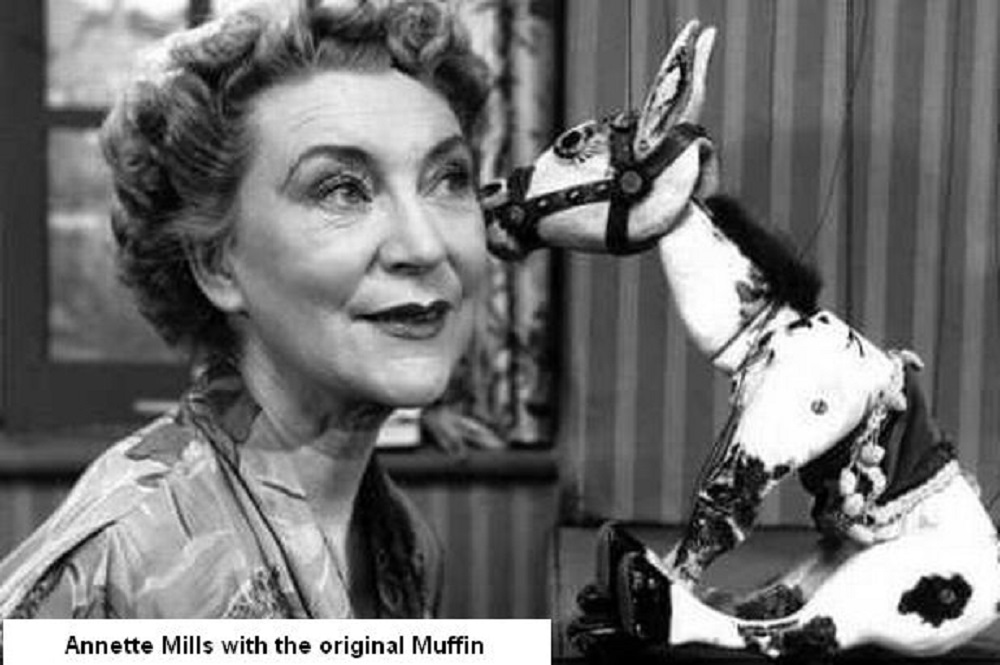 One year Father Christmas brought me a small chipboard kitchen dresser, probably made by someone my dad knew. I loved it, despite its ghastly shade of pink (war surplus paint perhaps?). The painted tin tea set from my grandparents sat on the open shelves, while jigsaws and games could be stored in the bottom cupboard.
One year Father Christmas brought me a small chipboard kitchen dresser, probably made by someone my dad knew. I loved it, despite its ghastly shade of pink (war surplus paint perhaps?). The painted tin tea set from my grandparents sat on the open shelves, while jigsaws and games could be stored in the bottom cupboard. Whatever the current craze, it was sure to appear on most Christmas lists. The ones I remember best were yo-yos, hula hoops and roller skates. Maybe it was because I was shy, but it mattered very much that my present of desire was exactly ‘right’.
Whatever the current craze, it was sure to appear on most Christmas lists. The ones I remember best were yo-yos, hula hoops and roller skates. Maybe it was because I was shy, but it mattered very much that my present of desire was exactly ‘right’. A compendium of games was up market, but sets of draughts, snakes and ladders, Ludo or even tiddly-winks were not to be sniffed at. Later in the decade, board games like Monopoly and Cluedo came along, but they were expensive, so stockings were more likely to contain a pack of cards.
A compendium of games was up market, but sets of draughts, snakes and ladders, Ludo or even tiddly-winks were not to be sniffed at. Later in the decade, board games like Monopoly and Cluedo came along, but they were expensive, so stockings were more likely to contain a pack of cards.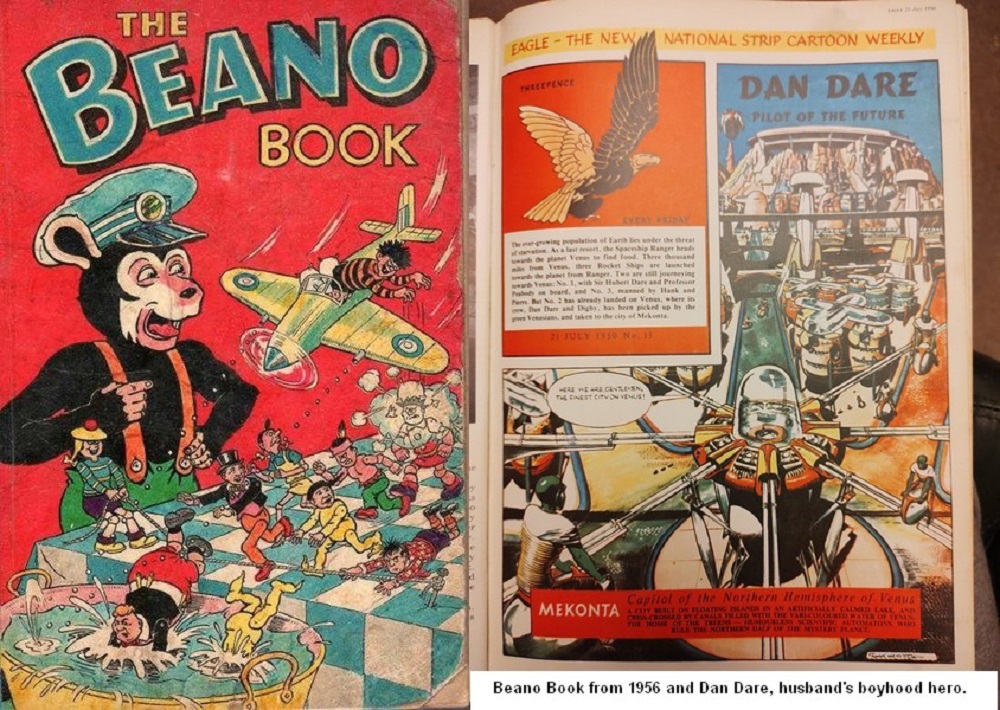 I invariably got one of the things specified on that list (or lists) I sent up the chimney. My parents would have been astounded to learn I felt the best bit of Christmas morning was opening my stocking. I loved those catch penny items such as chalks, crayons, puzzles, books and chocolate money, sold as stocking fillers.
I invariably got one of the things specified on that list (or lists) I sent up the chimney. My parents would have been astounded to learn I felt the best bit of Christmas morning was opening my stocking. I loved those catch penny items such as chalks, crayons, puzzles, books and chocolate money, sold as stocking fillers.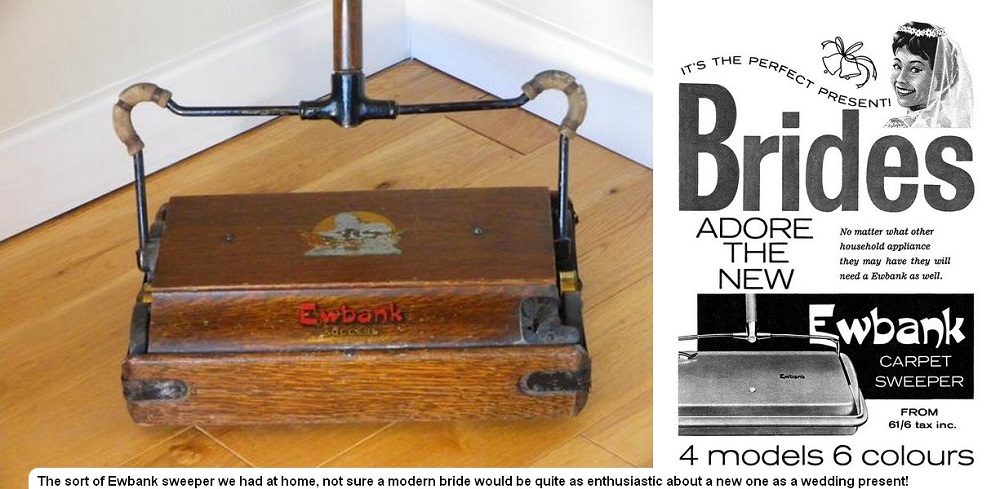 What we have learned to call ‘white goods’, were slowly insinuating themselves into working class homes, though they were almost never white in those days.
What we have learned to call ‘white goods’, were slowly insinuating themselves into working class homes, though they were almost never white in those days. Getting the bedding and towels for a large family washed and dried, especially in winter, was worth every penny of the small sum charged for a wash-house ‘ticket’. Dilapidated prams had a second incarnation once their life as baby carriages was over, and it was a common sight to see a woman pushing one to the wash-house with the week’s laundry nestling under the hood.
Getting the bedding and towels for a large family washed and dried, especially in winter, was worth every penny of the small sum charged for a wash-house ‘ticket’. Dilapidated prams had a second incarnation once their life as baby carriages was over, and it was a common sight to see a woman pushing one to the wash-house with the week’s laundry nestling under the hood.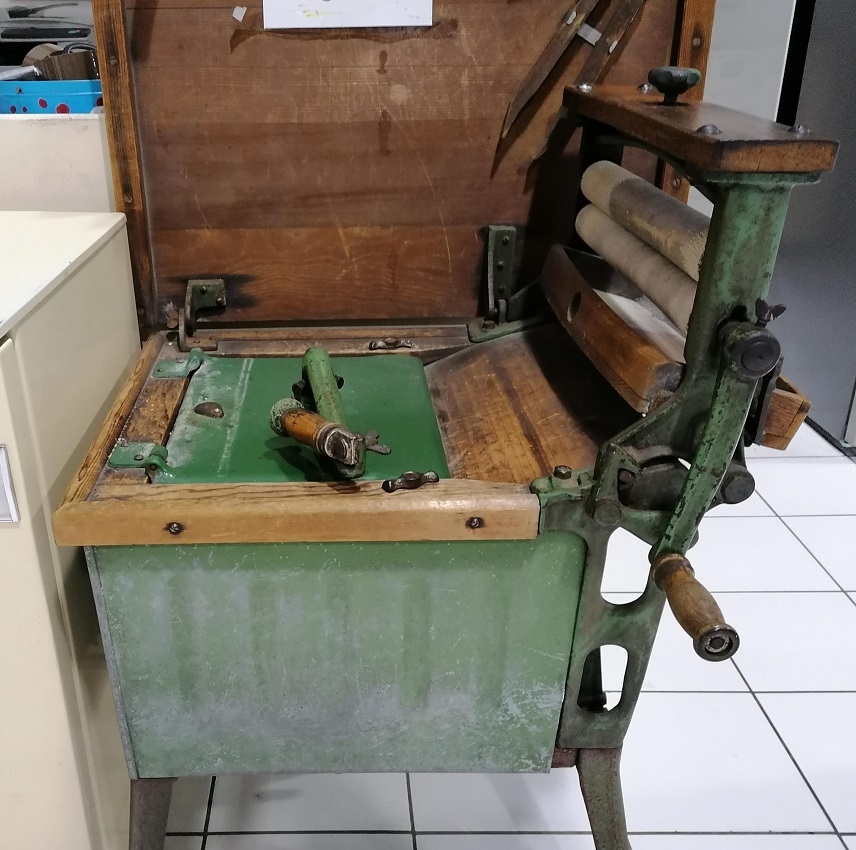 Vintage ‘washing machine and mangle (photo compliments of Direct Discounts, Oldham, purveyors of present day appliances).
Vintage ‘washing machine and mangle (photo compliments of Direct Discounts, Oldham, purveyors of present day appliances). 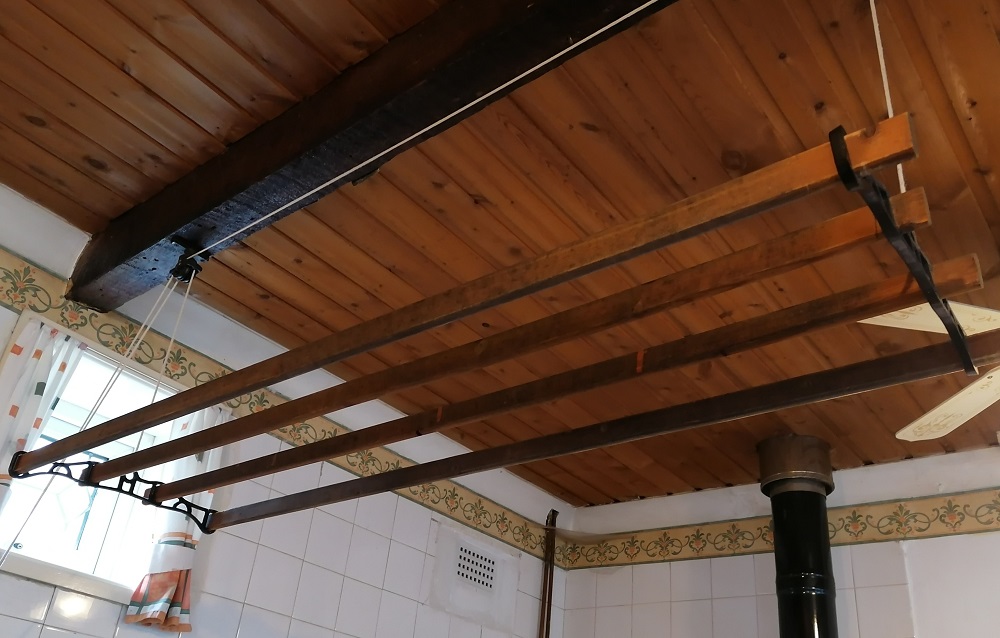 Airing rack still in use today (photo compliments of the editor’s mother-in-law)
Airing rack still in use today (photo compliments of the editor’s mother-in-law)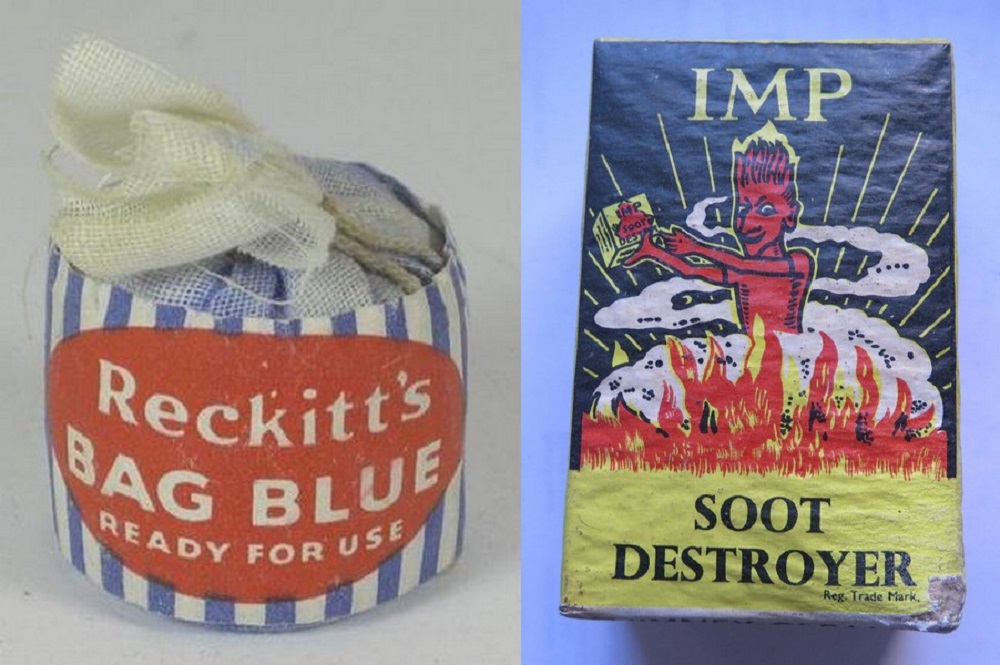 The flues on the back-to-back oven also required regular attention. First, kitchen shelves and surfaces were cleared and rugs taken outside. Then a housewife would kneel on the floor with a complicated array of long handled fire irons spread out on newspaper. Ash, fine enough to fly up at the least breath, was raked out first, followed by oily and rather sinister looking soot. Both were consigned to the dustbin before the kitchen was put to rights again.
The flues on the back-to-back oven also required regular attention. First, kitchen shelves and surfaces were cleared and rugs taken outside. Then a housewife would kneel on the floor with a complicated array of long handled fire irons spread out on newspaper. Ash, fine enough to fly up at the least breath, was raked out first, followed by oily and rather sinister looking soot. Both were consigned to the dustbin before the kitchen was put to rights again.